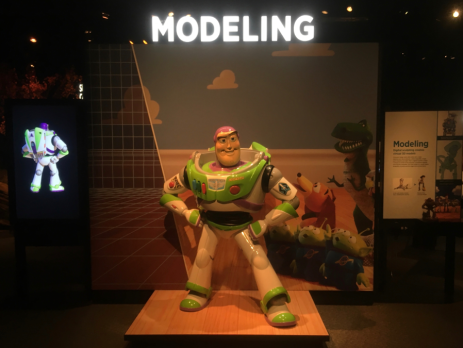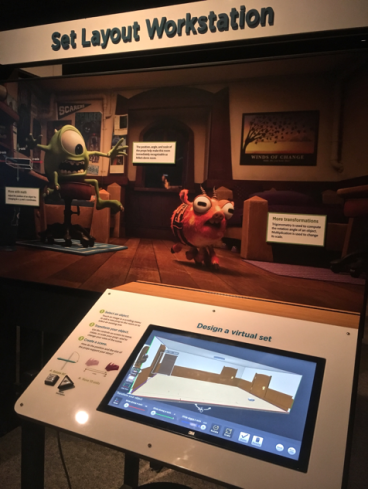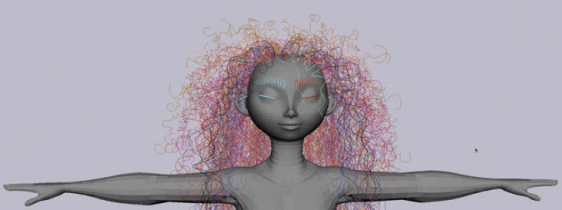My favorite two Pixar films are Toy Story and The Incredibles. Toy Story is a wonderful movie that piqued my childhood imagination with its story of toys coming alive when no one is watching. Even to this day I make sure to treat my remaining few stuffed animals well and leave them together when I leave home for school and work, just on the off chance they come to life when I am gone.
The Incredibles is everything I look for in a movie; action, adventure, and comic relief. I have been waiting for a sequel ever since I saw it in the theater at nine years old, and now my dream is finally coming true with The Incredibles 2 next year! These movies have been an important part of pop culture for my whole life, and recently I got to see a museum exhibit that made me appreciate the astounding artistic and scientific accomplishments of the employees at Pixar that make the films possible.

With arts funding down 37.5% since 20101 and many students not experiencing a science class until middle school, families must take advantage of other outlets for art and science education. One place elementary schools or parents can take their children is to a local arts or science museum. Some larger museums are able to host traveling exhibits such as “Bodies: The Exhibition” and “Nature’s Superheroes: Life at the Limits.” My local science museum, the Science Museum of Minnesota, recently hosted “The Science Behind Pixar” and I highly recommend going to see this amazing exhibit if you get the chance. (It is currently at the Henry Ford Museum of American Innovation in Dearborn, Michigan and TELUS World of Science in Edmonton, Alberta.)

There was a vast range of people visiting the exhibit the afternoon I was there, which was quite spectacular. There were elderly couples spending the afternoon together, a young nanny bringing 3 young viewers, parents taking the day to spend with their children, groups of teenagers, and even pairs of adults in their 20s or 30s. The variety of attendees makes it apparent that Pixar has been a huge part of many different people’s lives over the past 22 years. Whether it be the youngest generation who experience Inside Out or Finding Dory as their first Pixar film or the generations who were around to experience the first full-length Pixar film in 1995, Toy Story, Pixar really has something for everyone.

The exhibit has hands-on activities that allow you to build virtual sets of your own using furniture seen in many Pixar films. You can also play with lighting sources on orbs or in a miniature version of the living room from Up. Visitors can also begin to understand how basic 3D shapes are made computationally by rotating a 2D image about an axis or by moving it along a path.
Each step of production also has videos from employees at Pixar that explain the various processes that they work on in their department. It becomes very apparent to visitors that science and mathematics are present in every step from start to finish. For example, artists use mathematic equations (i.e., parabolas) to make curved grass blades, turn 2D shapes into 3D, and even for modeling curly hair (like Merida’s hair in Brave) after rigid springs. There are many other methods that help accomplish the basic features and various challenges that new productions need to incorporate. I was astonished at the amount of effort that goes into making these seamless films.

Once they have basic shapes made, the Pixar artists must add surfaces and lighting to make characters, buildings, and objects appear as natural as possible. For surfaces, think of the sheen on Lightning McQueen in the movie Cars or how the omelets Remy makes in Ratatouille look edible. Lighting must be added to all frames of the virtual sets to help form a natural setting, whether it be the living room in Up or the forest in Brave. The importance of lighting is most visible in the underwater movies, Finding Nemo and Finding Dory, because light plays a key role in oceanic environments. Emotion can also be depicted by light; for example, right at the start of Finding Nemo when the barracuda ate Marlin’s wife and all their eggs, there was a visible glimmer of hope from one remaining egg. A sadness followed by solace is very evident in that scene.

Once the animated frames are complete in the 3D realm, the images must be rendered by the computer to be able to be seen on a 2D screen. To learn more about the full rendering process, check out the Educational Resources section at the end of this blog post.
According to movie-rating aggregator Rotten Tomatoes, Pixar’s animated films have ratings of 80-100% with a few minor exceptions such as Cars. This popularity makes Pixar movies a perfect way to connect with audiences about concepts in science, art, and math, as well as the complex thinking and problem solving needed to create these films. Aside from showing people the effort that goes into the process, the Pixar exhibit helps expose the younger generations to the excitement of science, art, and math careers. It may seem cliché to say, but young people are the future and will help solve the oncoming challenges, from creating a more sustainable future to innovating newer technologies.
I believe that the Science Behind Pixar exhibit is an excellent opportunity for families and friends to experience together and definitely worth checking out if you get the chance. If you are looking for a vacation but do not know a destination, look into Dearborn, Michigan and Edmonton, Alberta where the exhibit is currently. I was amazed by the amount of work that goes into making these wholesome family films and it opened up my eyes to why it takes years for a sequel to make it to the big screen.
EDUCATIONAL RESOURCES
- Science Behind Pixar exhibit website
- National Council of Teachers of Mathematics: Computer Animation – lesson plan by Craig Russell (grades 9-12)
- Pixar Reinvents Big Hair for Brave by Rachel Gross in Wired, 2012
- Hair & fur advances in special effects (infographic) by Animation Mentor
- PBS Learning Media: Animation video collection
REFERENCES
- Americans for the Arts. A Decade of Federal Arts in Education Funding: Trends, Analysis, and the Story Behind the First 10 Years. Ed. Kristen Engebretsen & Elizabeth Sweeney. 2017.
